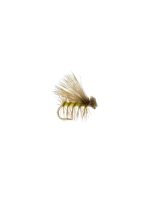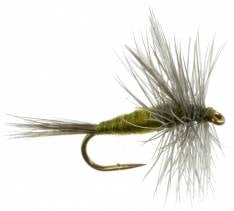As a fly fisherman, one of the biggest challenges you’ll face is figuring out what the trout are biting on. This can be a frustrating and time-consuming process, but with a little bit of knowledge and patience, you can become a master at determining what the fish are feeding on. In this blog article, we’ll share some tips and tricks to help you identify the right flies for successful fly fishing.
- Observe the water and surroundings
The first step to determining what the trout are feeding on is to observe the water and the surrounding environment. Look for signs of insects, such as mayflies or caddisflies, on the water’s surface or in the air. Pay attention to the birds and other wildlife in the area, as they may be feeding on insects that are also attractive to trout.
- Check the hatch charts
Hatch charts are a great resource for fly fishermen, as they provide information on the insects that are hatching in a particular area at a given time. Many fly shops and online resources offer hatch charts that are specific to different regions, so it’s worth doing some research and finding a chart that’s relevant to your fishing location.
- Use a seine net or insect collection kit
One of the most effective ways to determine what the trout are feeding on is to use a seine net or an insect collection kit. These tools allow you to collect samples of the insects that are present in the water, which you can then examine to determine the size, shape, and color of the insects. This information can help you select the right fly patterns to use.
- Experiment with different flies
Even if you think you know what the trout are feeding on, it’s always a good idea to experiment with different fly patterns to see what works best. Try using flies of different sizes, colors, and shapes, and vary your retrieval speed and technique until you find what the fish are responding to.
- Ask local experts
Finally, don’t be afraid to ask local experts, such as fishing guides or fly shop owners, for advice on what the trout are biting on. These individuals have a wealth of knowledge and experience in the area, and they can often provide valuable insights that can help you catch more fish.
In conclusion, determining what the trout are biting on can be a challenging but rewarding aspect of fly fishing. By observing the water and surroundings, checking hatch charts, using seine nets or insect collection kits, experimenting with different flies, and seeking advice from local experts, you can increase your chances of a successful and enjoyable day on the water.

